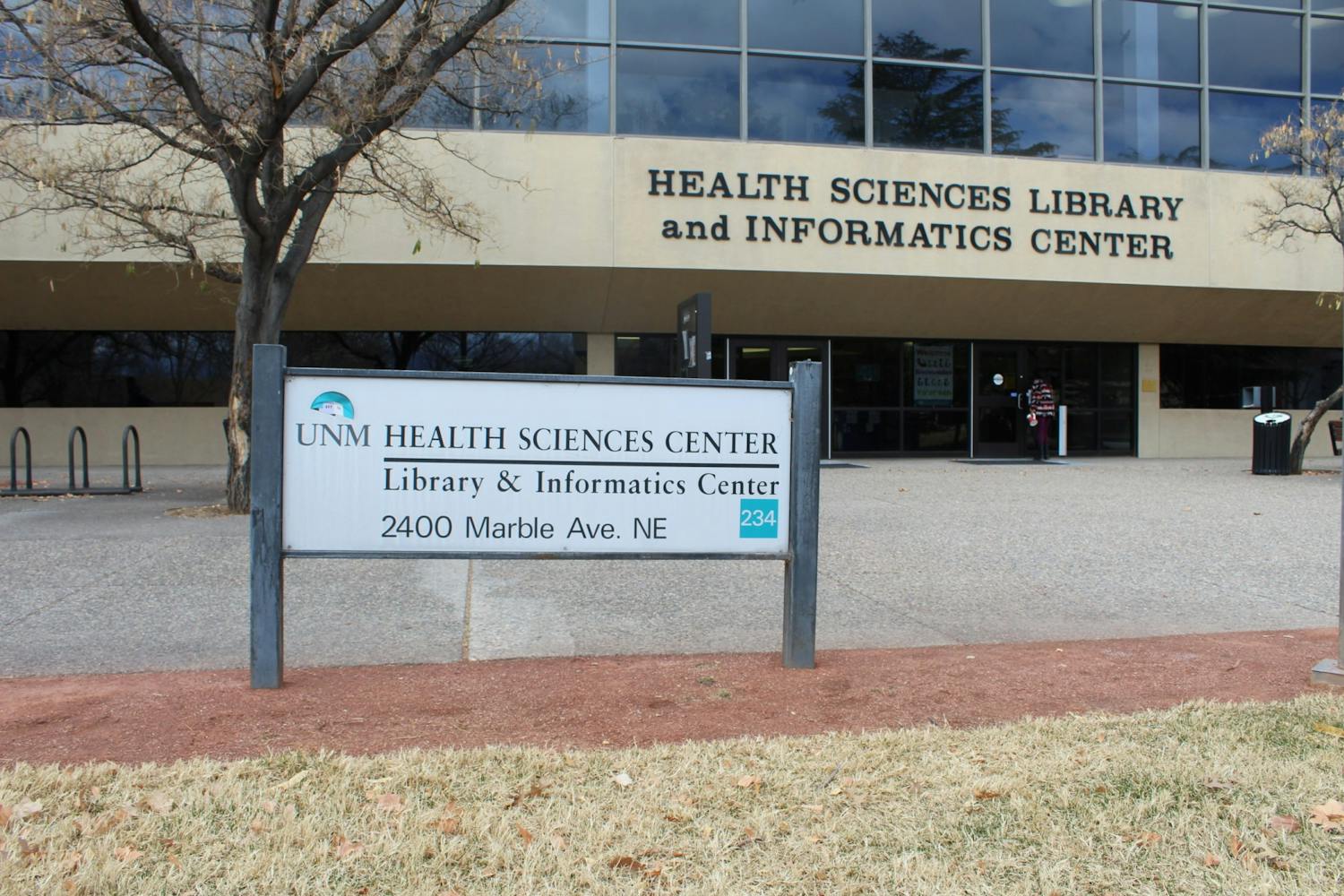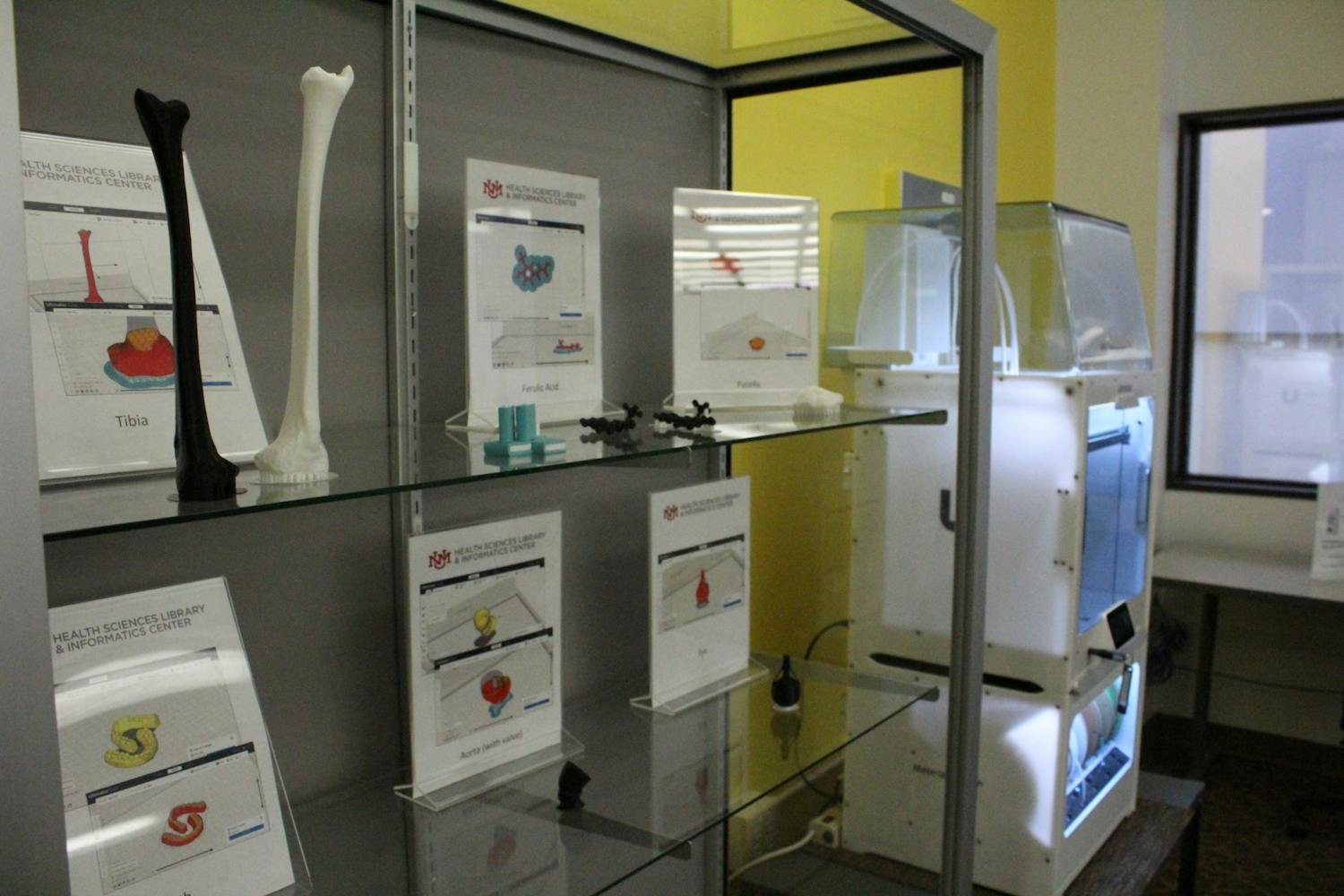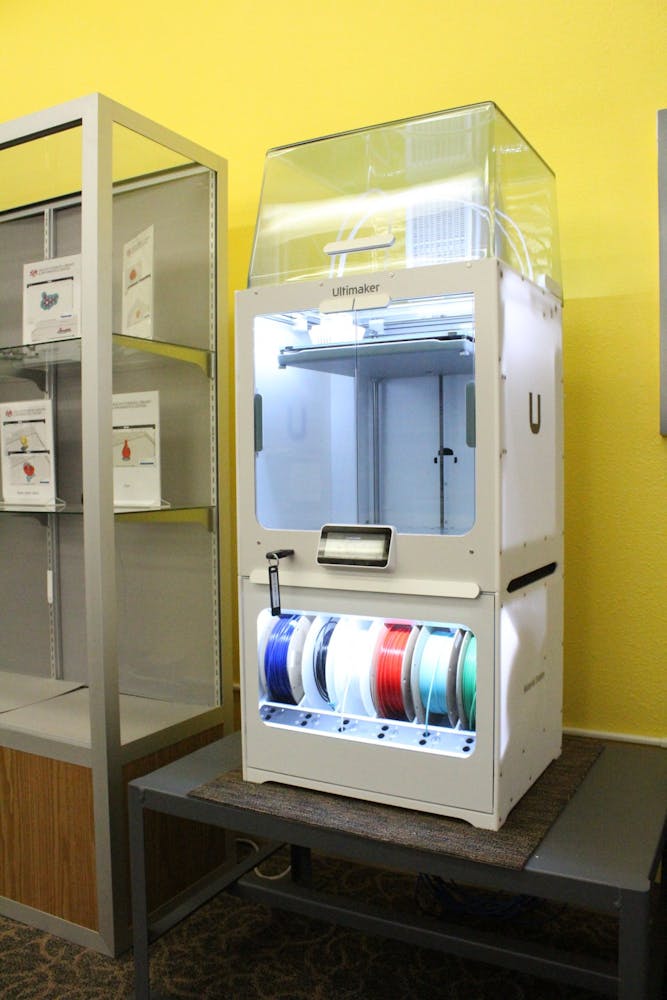The Health and Sciences Library and Informatics Center at the University of New Mexico introduced an anatomy virtual dissection table, a 3D printer and three virtual reality headsets into their program for student and faculty use, according to the HSLIC staff.
The anatomy virtual dissection table, the only natural and thoroughly segmented 3D human anatomy system, was added in October 2022. It is the latest model by the company Anatomage, according to the company's website.
Essentially, the table takes images of tiny minute layers of the human body and then re-composes them into a larger model that people can zoom in layer by layer as they explore and dissect that model, according to Jonathan Seyfriend, a HSLIC library information specialist.
“It's an actual person … There are actually four different models, and that allows for a bit of diversity in terms of the physiology. And then, when you get to the anatomy table, you can manipulate the model by rotating it, zooming in, zooming out; you can slice the model … or you can peel back layer by layer,” Seyfried said.
Table 9 also comes with various animal models for veterinary students to study or to compare animals’ anatomy with human ones for educational purposes.
“The purpose of the new technology is to provide health sciences students with an experience that is pretty much as close as you can get to cadaver dissection without actually having that cadaver there,” Seyfried said.
The table is open for all UNM students and faculty members who wish to learn from it as well as the public. There are no reservations required unless a faculty member wishes to take a large group of students, according to Seyfried.
The Ultimaker S5 3D printer was added in September of 2022. Its user-friendliness was the biggest factor in purchasing it, according to Seyfried and Timothy Mey, the Division Head at the HSLIC.
“We wanted something that was reliable and then easy to use because we want to remove as many barriers as possible to get our students to use the tech,” Mey said.
Students and faculty can use the 3D printer for educational purposes and print body parts, such as an aorta valve or a human palate, to help them study and have a better understanding that otherwise they wouldn’t have, according to Seyfried.
Unlike the anatomy virtual table which can be used by anyone, the 3D printer is only accessible to students and faculty from the health and sciences department. Because the equipment is still new, there is no need for reservations; the only requirement for its use is that it is for educational purposes, according to Seyfried.
Get content from The Daily Lobo delivered to your inbox
The library also introduced three new Oculus Quest 2 Advanced virtual reality headsets back in April 2022. Rachel Howarth, another HSLIC library information specialist, said that the headsets were in response to the current VR Lab the library has but is much more flexible.
“But having these (VR) that you can check out that are personal to you. You don't have to be in the room with the staff using it. This is much more portable and manageable and flexible than that's new to the library,” Howarth said.
Like the 3D printer, the VR headsets are only offered to HSC students and faculty. They can be checked out at the HSLIC front desk for up to three days, according to Howard.
“(This lets us be on the) bleeding edge, or at least the cutting edge, in terms of offering technological solutions to HSC students,” Mey said.
There’s still a discussion regarding purchasing more VR headsets to satisfy the needs of HSC students, acording to Seyfriend.
“We wanted to infuse the new technology into what we offer here at the library, which is your kind of starting point for research and education in our program. (We) also (want) to support the faculty who might want to incorporate some of that tech into their curriculum,” Seyfried said.
The funds for all additions came from savings from what would have been salary for temporarily vacant positions and collections budgets for VR anatomy software. HSC collection policy includes buying all types of media that would be beneficial to the community, according to Melissa Rethlefsen, the executive director at HSLIC.
At the moment, the HSC department is not adding extra student fees to allow for usage of the items, according to Rethlefsen.
“Other academic libraries with 3D printing services generally charge a cost recovery fee for filament, but we don’t have anywhere near the usage that would require us to move to that model at this time,” Rethlefsen wrote.
Annya Loya is the news editor at the Daily Lobo. She can be contacted at news@dailylobo.com or on Twitter @annyaloya








